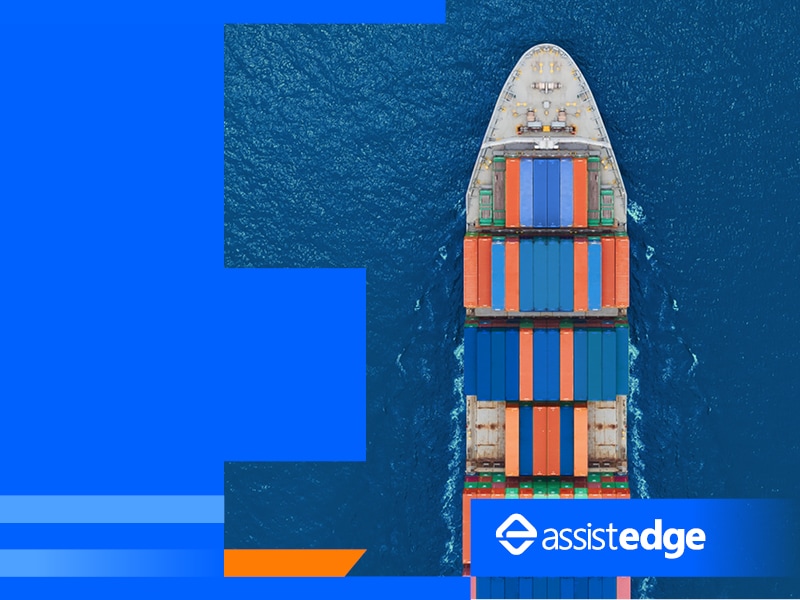What is RPA?
Robotic Process Automation is revolutionizing the way we think and operate, making digital transformation a reality. But, what exactly is RPA? How can RPA enable enterprises to embark on a digital transformation journey?
Robotic Process Automation (RPA) uses software robots to automate repetitive, rule-based processes, by mimicking user interactions and working across several functions and applications. The bots here not only automate clerical, monotonous tasks but can also sense a tremendous amount of data and learn as the process evolves. By automating dull, tedious and time-consuming tasks, RPA frees up your employees’ time to focus on more strategic, revenue-generating tasks, leading to a boost in employee morale and satisfaction.
“40% of enterprises will have automation centers in place.” Source: Forrester

What is Assisted Automation?
Robotic Process Automation (RPA) has been broadly categorized into Assisted Automation and Unassisted automation.
| Assisted/Attended Automation | Unassisted Automation |
|---|---|
| Robots run on the desktop machine along with the agent and are triggered by the agents. | Robots are run remotely on servers without any human intervention. |
| Most suitable for automating back-office processes, but can also automate traditional front office tasks. | Can work independently in back-office processes without human intervention. |
| Parts of processes, which are rule-based can be automated, while some parts require human intervention and judgement to be applied. | Requires structured digital information to automate any application. |
| Reduces average handling times, improves customer experience, resulting in cost savings. | Robots can operate 24/7, producing scalable virtual workers, leading to greater productivity. |
Delve deeper into Assisted Automation in our whitepaper “Demystifying Assisted Automation”.
What is Intelligent Automation?
Cognitive/Intelligent Automation is bringing in a disruptive transformation across industry sectors. Intelligent Automation uses Artificial Intelligence technologies such as Machine Learning, Natural Language Processing, semantic technology, and data mining to make sense of the voluminous data (bot structured and unstructured data) out there.
Intelligent Automation powers a whole new generation of data-driven enterprises to traverse the automation journey. AI-powered RPA not only helps automates repetitive, manual tasks but also creates a broader automation strategy that is aligned to the business values. From reducing transactional errors to enabling organizations to scale, Intelligent Automation is revolutionizing the way businesses operate.

Benefits of RPA
From automating data entry tasks to simplifying business processes, RPA has a host of benefits that cannot be ignored.
Few such benefits of RPA are:
“According to Deloitte’s third annual RPA survey, only 3% of organizations have scaled to 50 or more robots.”
How can enterprises benefit from RPA?
Did you know that more than 70% of deterministic tasks can be automated using software robots? RPA can empower enterprises on their digital transformation journeys. If you’re thinking of implementing RPA services across business units and functions, scalability, accuracy, security, and intelligence are the key factors that you should consider.
It is predicted that automation software can replace up to 140 million full-time employees worldwide by 2025. That being said, RPA is not a magic bullet, rather a process-driven software that is crucial to creating a brave new digital world. The success of your RPA implementation depends a lot on how you identify processes to automate , how you manage change and how you scale.

AssistEdge - A Leading Enterprise Grade Scalable Automation Platform
AssistEdge, EdgeVerve’s intelligent end-to-end RPA platform, enables companies to automate their business processes from discovery to deployment and beyond, enhancing productivity, reducing operational costs and minimizing errors. The AssistEdge RPA platform enables users to build, deploy and manage intelligent bots or a digital workforce that automates processes end-to-end across heterogeneous technologies.
From a reduction in costs to a rise in productivity, AssistEdge RPA empowers enterprises to begin their automation journey. Learn more about AssistEdge RPA here.

RPA solutions in various industries/applications
RPA has come a long way since screen scraping and basic workflow automation. It has revolutionized a plethora of industries front and center, focusing on empowering enterprises to embark on their digital transformation journeys. As innovation in technology evolves, RPA is expected to have a massive impact on business efficiency and has the potential to make a huge difference across industry verticals.
Request a meeting

Thank you for your interest!
Our team will get back to you soon.
Supercharge your automation efforts today!
“Over 43% of respondents globally consider their RPA initiatives a strategic priority.”
“95% of respondents consider speed and scalability to be the most important drivers for RPA adoption.”
“Over 91% of respondents consider improving the employee experience an important objective of RPA by enabling employees to contribute to more value-added work.”
“92% of respondents say that improving customer experience is one of their primary drivers for RPA adoption.”
“4 in 10 organizations currently have three to five (or more) RPA vendors in their ecosystems. This amount is set to increase to 55% of organizations in the next three years.”
Source: Evolution of The Enterprise Workforce in The Age of Automation A Forrester Consulting Thought Leadership Paper Commissioned by EdgeVerve









